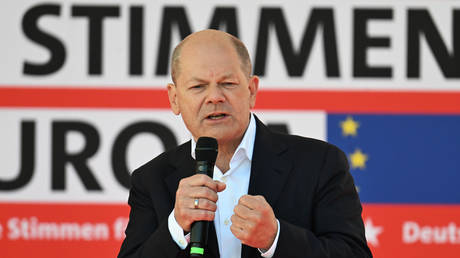
Chancellor Olaf Scholz has warned such a move would place NATO in direct conflict with Russia
Proposals to establish a no-fly zone over Ukraine are all “dangerous talk from warmongers,” German Chancellor Olaf Scholz said over the weekend, cautioning against any escalatory actions.
His comments came after former NATO chief Anders Fogh Rasmussen presented a ten-page paper together with the Ukrainian government, which suggested binding Kiev to its NATO partners by implementing an air defense shield along the western border of the country.
The goal of such a move would be to “protect NATO from Russian missile and drone strikes, but also Ukrainian civilians and military infrastructure in a well-defined area of responsibility inside western Ukraine.” This, in turn, would allow Kiev to move air defense systems to the frontline in the east to protect key cities such as Kharkov and Dnepr, according to the document.
During a campaign speech for his SPD party in the upcoming European Parliament elections, Scholz branded the idea as dangerous talk from warmongers, and expressed frustration at anyone who is still considering setting up a “no-fly zone” over Ukraine.
Scholz insisted that while it is important to continue supporting Kiev, neither Germany, Europe or NATO should become a party to the war, and should not be asked to do so as such a development could prompt an “unpredictable reaction” from Russian President Vladimir Putin.
Last week, German opposition parties also came out in support of shooting down Russian missiles and drones over Ukraine using defense systems based in Poland and Romania. Scholz’s government dismissed the proposal.
Spokesman Steffen Hebestreit stressed that Berlin opposes any initiative aimed at establishing a no-fly zone over any part of Ukraine that would be controlled by NATO forces, saying such a move would “cross the line into direct participation.”
Meanwhile, Russia has repeatedly warned that the use of any NATO weapons in Ukraine, such as US-made F-16 fighter jets, would give Moscow the right to target the systems wherever they operate from, including airfields in NATO countries.




